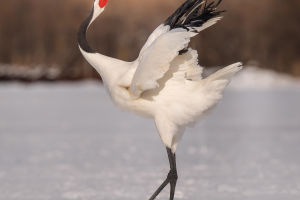Dragonfly: Master Of Flight
We often dislike many insects due to the negative impact they have on our crops or their potential harm to humans. There are certain insects, like dragonflies, that we actually appreciate and consider harmless.
Despite our perception of dragonflies as harmless creatures, we may have underestimated their strength and flying abilities. Dragonflies are carnivorous insects known for their incredibly strong flight skills.
Their remarkable flying abilities have even inspired human engineers to replicate their flight mechanics and push the boundaries of aviation technology.
Dragonflies were among the earliest creatures capable of flight. While humans are considered the dominant species on Earth, many insects and other creatures appeared long before us, including dragonflies.
In comparison to humans, dragonflies can be considered relatively primitive insects.
Approximately 300 million years ago, winged insects, including dragonflies, emerged. These insects were the pioneers of flight, appearing more than 70 million years before pterosaurs.
Fossil records indicate that dragonflies existed much earlier than dinosaurs. The ancient dragonfly fossils date back around 320 million years. During that time, the oxygen content in the Earth's atmosphere was significantly higher, allowing for larger dragonflies.
For instance, an early Permian dragonfly fossil discovered in the United States boasted an impressive wingspan of 0.71 meters.
Given their early emergence, dragonflies had ample time to optimize their flying abilities, which explains why they became the rulers of the airborne realm.
Today, most dragonflies have a wingspan ranging from 5 to 12 centimeters. While their current size is much smaller than their ancient counterparts, dragonfly species remain abundant, with approximately 5,000 known species worldwide.
Dragonflies possess two sets of wings and specialized muscles that allow each pair to work independently. This unique wing structure enables them to maneuver with astonishing agility.
They can fly forward and backward effortlessly and are capable of flying in any direction, including upside down. They can also swiftly execute 180-degree turns and hover in place for extended periods, akin to a helicopter.
Not only are they agile, but dragonflies are also incredibly fast flyers. Their average cruising speed can reach 100 times their body length per second. Larger dragonflies can achieve speeds exceeding 100 kilometers per hour, comparable to speeding cars on many highways.
Even smaller dragonflies can reach speeds of 36-54 kilometers per hour, making them the fastest fliers in the insect world.
Furthermore, dragonflies possess remarkable endurance in flight. Pantala flavescens, widely distributed across the globe, is recognized as a global migratory insect. Observations have revealed that they can cover distances of up to 17,700 kilometers per year, crossing the Indian Ocean.
This makes them the longest-known migratory insects.
Their extraordinary flying abilities make dragonflies natural predators. Flight is vital for their survival, and adult dragonflies carry out all activities while in flight, including hunting for prey. A stationary dragonfly will not even feed.
、
Dragonflies are fascinating creatures with exceptional flying skills, and their presence in the insect world reminds us of the remarkable wonders of nature.


